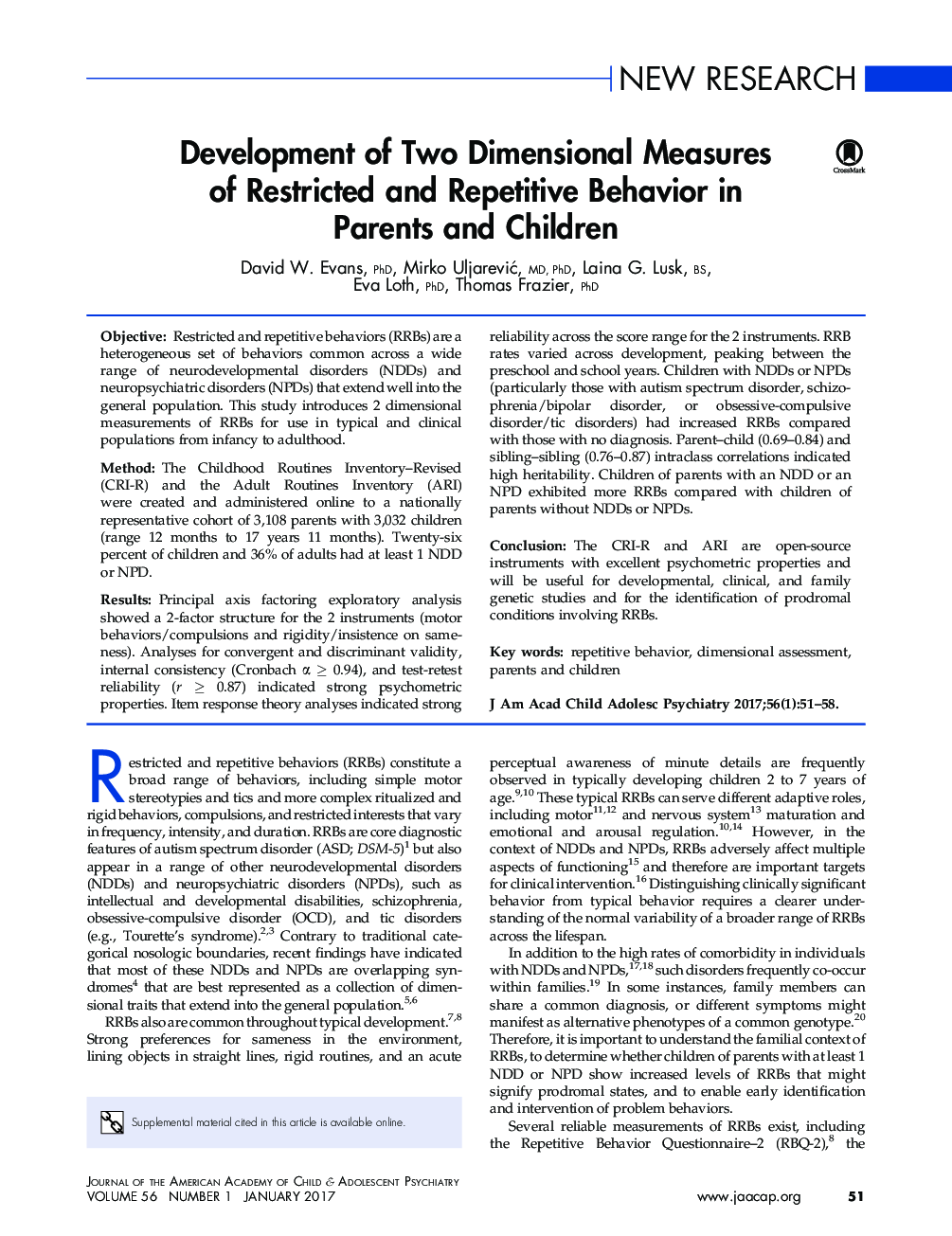| کد مقاله | کد نشریه | سال انتشار | مقاله انگلیسی | نسخه تمام متن |
|---|---|---|---|---|
| 4931594 | 1432919 | 2017 | 8 صفحه PDF | دانلود رایگان |
ObjectiveRestricted and repetitive behaviors (RRBs) are a heterogeneous set of behaviors common across a wide range of neurodevelopmental disorders (NDDs) and neuropsychiatric disorders (NPDs) that extend well into the general population. This study introduces 2 dimensional measurements of RRBs for use in typical and clinical populations from infancy to adulthood.MethodThe Childhood Routines Inventory-Revised (CRI-R) and the Adult Routines Inventory (ARI) were created and administered online to a nationally representative cohort of 3,108 parents with 3,032 children (range 12 months to 17 years 11 months). Twenty-six percent of children and 36% of adults had at least 1 NDD or NPD.ResultsPrincipal axis factoring exploratory analysis showed a 2-factor structure for the 2 instruments (motor behaviors/compulsions and rigidity/insistence on sameness). Analyses for convergent and discriminant validity, internal consistency (Cronbach α ⥠0.94), and test-retest reliability (r ⥠0.87) indicated strong psychometric properties. Item response theory analyses indicated strong reliability across the score range for the 2 instruments. RRB rates varied across development, peaking between the preschool and school years. Children with NDDs or NPDs (particularly those with autism spectrum disorder, schizophrenia/bipolar disorder, or obsessive-compulsive disorder/tic disorders) had increased RRBs compared with those with no diagnosis. Parent-child (0.69-0.84) and sibling-sibling (0.76-0.87) intraclass correlations indicated high heritability. Children of parents with an NDD or an NPD exhibited more RRBs compared with children of parents without NDDs or NPDs.ConclusionThe CRI-R and ARI are open-source instruments with excellent psychometric properties and will be useful for developmental, clinical, and family genetic studies and for the identification of prodromal conditions involving RRBs.
Journal: Journal of the American Academy of Child & Adolescent Psychiatry - Volume 56, Issue 1, January 2017, Pages 51-58
